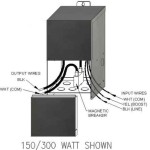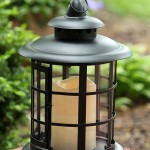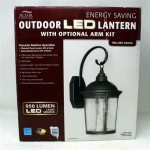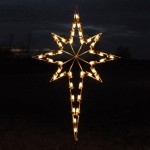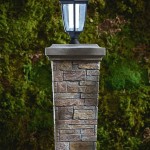Photoelectric Switches for Outdoor Lights: A Comprehensive Guide
Photoelectric switches, also referred to as photocells or light sensors, are crucial components for automating outdoor lighting systems. These devices automatically control lighting fixtures based on ambient light levels, switching lights on at dusk and off at dawn. This functionality enhances energy efficiency, improves security, and provides convenience by eliminating the need for manual operation.
The principle behind a photoelectric switch is relatively simple. It relies on a sensor, typically a photodiode or phototransistor, that detects the intensity of visible light. When the ambient light falls below a predetermined threshold, the switch activates, completing the electrical circuit and turning on the connected lights. Conversely, when the ambient light exceeds the threshold in the morning, the switch deactivates, breaking the circuit and turning off the lights. This intelligent operation ensures that outdoor lights are only illuminated when they are needed, minimizing energy waste and reducing operational costs.
The widespread adoption of photoelectric switches in outdoor lighting applications stems from their numerous advantages. Beyond energy savings, automated operation offers heightened security by deterring potential intruders. Well-lit premises offer a less appealing target. Furthermore, the convenience of automatic operation removes the burden of manually switching lights on and off, particularly beneficial for individuals with busy schedules or limited mobility.
Understanding the Mechanics of Photoelectric Switches
Photoelectric switches are engineered with a specific operational mechanism to efficiently and reliably control outdoor lighting. The core component is the light sensor, often a photodiode or phototransistor. These semiconductor devices exhibit a change in their electrical characteristics when exposed to light. Specifically, in the presence of light, the photodiode allows a current to flow, while the phototransistor amplifies the current. The magnitude of this current is directly proportional to the intensity of the incident light.
This light-dependent current is then fed into a comparator circuit. The comparator compares the voltage generated by the light sensor to a pre-set reference voltage, known as the threshold voltage. This threshold voltage corresponds to the ambient light level that triggers the switch. When the voltage from the light sensor falls below the threshold voltage (indicating darkness), the comparator output changes its state. This change in state activates a relay or a solid-state switch.
The relay or solid-state switch functions as the actual electrical switch that controls the flow of power to the connected lighting fixture. When the comparator output activates the relay, the relay contacts close, completing the electrical circuit and turning on the lights. Conversely, when the ambient light increases and the comparator output deactivates the relay, the relay contacts open, breaking the electrical circuit and turning off the lights. Solid-state switches operate similarly, but they use semiconductor devices like transistors or thyristors instead of mechanical contacts, offering benefits like faster switching speeds and improved reliability.
To prevent erratic switching due to momentary fluctuations in light levels, such as passing car headlights or brief cloud cover, many photoelectric switches incorporate a time delay circuit. This circuit introduces a short delay, typically a few seconds or minutes, before the switch changes state. This delay ensures that the switch only responds to sustained changes in ambient light, preventing nuisance switching and prolonging the lifespan of the lighting fixtures and the switch itself.
Furthermore, many photoelectric switches incorporate adjustable sensitivity settings, allowing users to fine-tune the light level at which the switch activates. This feature is particularly useful for installations in areas with varying ambient light conditions, such as near streetlights or in locations with significant seasonal variations in sunlight hours. The adjustable sensitivity allows the switch to be calibrated to accurately respond to the desired light levels, optimizing performance and energy savings.
Types of Photoelectric Switches
The market offers a variety of photoelectric switches, each designed for specific applications and installation configurations. Understanding the different types is essential for selecting the appropriate switch for a particular outdoor lighting project.
Button-type Photoelectric Switches: These are among the most common types, characterized by their compact size and ease of installation. They are typically mounted directly onto the lighting fixture or junction box, with a small, protruding sensor that detects ambient light. Button-type switches are well-suited for individual outdoor lights, such as porch lights, garage lights, and small security lights. Their affordability and simplicity make them a popular choice for residential applications.
Swivel-type Photoelectric Switches: Offering enhanced flexibility in sensor positioning, swivel-type switches feature a sensor that can be rotated and adjusted to optimize light detection. This adjustability is beneficial in situations where the switch is mounted in a location that may be partially obstructed or where the ambient light levels vary significantly depending on the direction. Swivel-type switches are often used for larger outdoor lighting installations, such as those found in commercial or industrial settings.
Hardwired Photoelectric Switches: Designed for permanent installations, hardwired photoelectric switches are directly wired into the electrical circuit. This type of switch offers increased reliability and tamper resistance compared to plug-in models. Hardwired switches are typically used in applications where the switch is expected to operate continuously for extended periods, such as in street lighting or large-scale security lighting systems.
Wireless Photoelectric Switches: Utilizing wireless communication protocols, such as Zigbee or Z-Wave, wireless photoelectric switches offer remote control and monitoring capabilities. These switches can be integrated into smart home or building automation systems, allowing users to adjust sensitivity settings, monitor energy consumption, and receive alerts related to lighting performance. Wireless photoelectric switches are ideal for applications where remote management and control are desired, such as in large residential properties or commercial buildings.
Photocells with Integrated Timers: Some photoelectric switches combine light-sensing capabilities with a programmable timer. These devices can be configured to turn lights on at dusk and off at a specific time, regardless of the ambient light level. This combination offers enhanced control over lighting schedules, allowing for customized operation based on specific needs or preferences. Photocells with integrated timers are often used in applications where lights need to be kept on for a predetermined period, such as for security purposes or to highlight architectural features.
Key Considerations for Selecting and Installing Photoelectric Switches
Selecting the appropriate photoelectric switch for an outdoor lighting system requires careful consideration of several factors. The load capacity of the switch must be sufficient to handle the total wattage of the connected lighting fixtures. Exceeding the load capacity can damage the switch and potentially create a fire hazard. The voltage rating of the switch must also match the voltage of the electrical system.
The ambient light conditions at the installation location are another critical consideration. If the switch is installed in an area with significant ambient light from streetlights or other sources, a switch with adjustable sensitivity may be necessary to prevent premature turn-off. Conversely, if the installation location is heavily shaded, a switch with high sensitivity may be required to ensure reliable operation.
The mounting location and orientation of the switch are also important factors. The sensor should be positioned to receive unobstructed ambient light, away from direct sunlight or reflected light from nearby surfaces. The mounting location should also be protected from the elements, such as rain and snow, to prolong the lifespan of the switch.
When installing a photoelectric switch, it is essential to follow all applicable electrical codes and safety regulations. The switch should be installed by a qualified electrician to ensure proper wiring and grounding. Before working on any electrical circuit, the power should be turned off at the breaker box to prevent electric shock.
Regular maintenance can help prolong the lifespan and ensure the reliable operation of photoelectric switches. The sensor should be periodically cleaned to remove any dirt or debris that may obstruct light detection. The wiring connections should also be inspected regularly to ensure that they are secure and free from corrosion. If the switch malfunctions or fails to operate as expected, it should be replaced by a qualified electrician.
The longevity of a photoelectric switch can be impacted by environmental factors. Switches installed in harsh environments with extreme temperatures, high humidity, or exposure to corrosive elements may require more frequent maintenance or replacement. Selecting a switch with appropriate environmental ratings can help to mitigate these issues.
Energy saving continues to be a primary driver for the adoption of photoelectric switches. The use of these devices significantly reduces energy consumption by ensuring that outdoor lights are only on when needed. This contributes to lower electricity bills and a reduced carbon footprint. The combination of energy savings, improved security, and enhanced convenience makes photoelectric switches a valuable investment for both residential and commercial properties.

Hardwire Post Eye Light Control With Photocell Automatic Sensor Switch Ledwholers

Ac 230v Dusk To Dawn Sensor Photocell Switch Photoelectric Swi Massive Discounts

Tebru Light Sensor Control Automatic On Off Photoelectric Switch For Outdoor Lighting Fixtures Com

Subminiature Photoelectric Switch 120 V Ac

2pack Dusk To Dawn Day Night Sensor Photoelectric Switch Photo Cell Ip65 Waterproof Photocell For Outdoor Light Com
/product/19/9342352/1.jpg?strip=all)
915 Generation Dusk To Dawn Sensor 2 Packs Photocell Light For Outdoor Lighting 120 277v Photoelectric Switch Replacement Jumia

Hardwire Post Eye Light Control With Photocell Automatic Sensor Switch Ledwholers

Photocell Sensor Photoelectric Switch Light Control For Street Outdoor Indoor Home Com

Photocell Dusk To Dawn Light Sensor Automatic Control Switch For Outdoor Lighting China Photoelectric Made In Com

